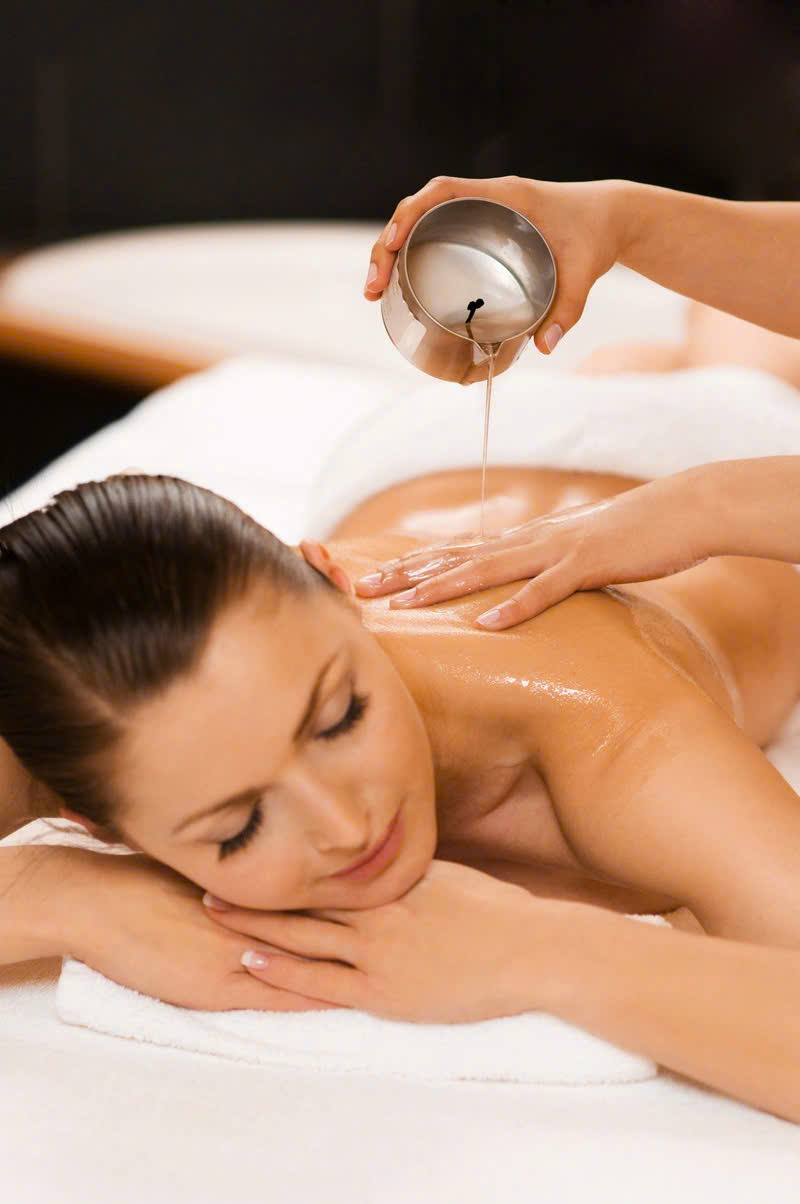Hot oil and hot stone massage – What is the difference? 5 amazing benefits
hot oil and hot stone massage is the most popular massage types in the world.In the world of relaxation and wellness, different techniques come into play to soothe the body and mind. Among these methods, comparing hot oil and hot stone massage reveals unique qualities that cater to various needs. While both treatments aim for relaxation and alleviating tension, they utilize distinct approaches that make them effective in their own ways. In this blog post, we will delve deeply into these two popular massage techniques, exploring their definitions, mechanisms, benefits, differences, and ultimately, which might be better suited for individual customers.

Compare hot oil and hot stone massage
When it comes to choosing between a hot oil and a hot stone massage, understanding their differences is crucial. Both modalities are widely recognized for their ability to enhance relaxation, relieve muscle tension, and promote holistic well-being. However, they differ significantly in terms of technique, application, and the overall experience offered.
In a hot oil massage, heated oils are utilized to facilitate smooth strokes over the body, providing hydration to the skin while penetrating deeper layers of muscle tissue. This type of massage often incorporates various techniques ranging from Swedish to deep tissue, allowing for a personalized experience based on the client’s needs.
On the other hand, the hot stone massage employs smooth, heated stones strategically placed on specific areas of the body or used as tools by the massage therapist to knead tight muscles. The warmth of the stones helps to release muscle tension and improve circulation, offering a unique sensation that combines heat therapy with traditional massage techniques.
Both methods hot oil and hot stone massage are offer incredible benefits, but each has its unique characteristics that may appeal to different individuals based on their preferences, physical conditions, and desired outcomes.
Historical Background of hot oil and hot stone massage
Understanding the historical context of hot oil and hot stone massage therapies can provide insights into their development and effectiveness.
Hot oil massages have roots in ancient practices, drawing upon techniques from cultures such as Ayurvedic medicine in India, where warm oils were traditionally used to balance body energies and promote healing. This practice has evolved, incorporating various modern techniques and essential oils for an enriched experience.
Conversely, hot stone massage originated from Native American traditions, where heated stones were employed for therapeutic purposes. The incorporation of heat into the massage transported the benefits of traditional massage to another level, allowing practitioners to harness the power of thermal energy in their techniques.

Popularity and Usage of hot oil and hot stone massage
The popularity of both types of massages has surged in recent years, with spas and wellness centers frequently offering both options. Clients often find themselves at a crossroads when deciding which treatment to choose, thus highlighting the importance of comparing hot oil massage and hot stone massage in terms of their benefits and applications.
Hot oil massages are particularly popular among those seeking relief from stress and anxiety. With various blends of essential oils available, clients can tailor their experiences to suit their emotional and physical needs, making it a versatile choice.
Hot stone massage, on the other hand, is favored for its deep-tissue benefits and the unique sensation of warmth penetrating the muscles. Clients who experience chronic pain or muscle tightness often gravitate towards this method due to its effective technique.
Client Preferences of hot oil and hot stone massage
Ultimately, client preferences play a significant role in determining which massage type is more suitable. Some individuals may lean towards the comforting familiarity of hot oil massages, while others may seek the innovative approach of hot stone treatments. By thoroughly examining each treatment’s aspects, clients can make informed decisions about which option aligns best with their personal wellness goals.
What is hot oil massage and hot stone massage
To appreciate how hot oil and hot stone massages work, it’s essential to understand what exactly each entails.
Hot Oil Massage Explained
A hot oil massage involves the application of heated oils on the body, promoting relaxation and easing muscle tension. The process begins with selecting a suitable oil blend, typically infused with essential oils, for enhanced aroma and therapeutic benefits.
Once the oil is heated to a comfortable temperature, the therapist uses long, flowing strokes, kneading motions, and sometimes even pressure points, depending on the client’s needs. The warmth of the oil not only soothes the skin but also allows the therapist to manipulate the muscles more effectively, delivering a deeper sense of relaxation.
Hot Stone Massage Explained
A hot stone massage, on the other hand, incorporates smooth, heated stones that are either placed on specific areas of the body or utilized as tools during the massage. The stones are typically basalt, known for their ability to retain heat, and are heated in water before the session begins.
During the treatment, the therapist places the heated stones strategically on points such as the back, hands, and feet, while using additional stones to massage tight muscles. The warmth penetrates deeply, aiding in muscle relaxation and improving blood flow. This method also offers a unique sensory experience that sets it apart from traditional massages.

Key Techniques and Approaches of hot oil and hot stone massage
Both techniques of hot oil and hot stone massage employ distinct methods to achieve relaxation and muscle relief.
In hot oil massage, therapists may incorporate various massage styles, including Swedish, deep tissue, and aromatherapy, to create a customized experience tailored to each client’s needs. The use of different strokes, varying pressures, and rhythmic movements contributes to an engaging and therapeutic journey.
In contrast, hot stone massage focuses primarily on heat application and manipulation through the stones. The therapist’s approach revolves around the strategic placement of stones to target specific muscle groups while integrating gentle massage techniques to maximize the benefits of heat and pressure.
How hot oil and hot stone massage works
Diving deeper into how each massage type works provides valuable insights into their effectiveness for various clients.
The Mechanism of Hot Oil Massage
Hot oil massage operates on multiple levels, engaging the body through the use of heat, touch, and aromatic properties of essential oils.
As the heated oil is applied to the skin, it serves several functions:
- Heat Penetration: The warmth from the oil helps to open up pores and increases blood circulation in the treated areas. This encourages oxygen flow and nutrient delivery to the muscles, contributing to faster recovery and relief from tension.
- Skin Hydration: The oils nourish the skin, preventing dryness and enhancing its elasticity. This is particularly beneficial for individuals with dry or sensitive skin, as it promotes moisture retention and overall skin health.
- Emotional Connection: The incorporation of essential oils elevates the sensory experience, further enhancing relaxation. Aromas like lavender, eucalyptus, or chamomile can positively impact mood and mental clarity, creating a holistic experience that transcends mere physical relief.
The Mechanism of Hot Stone Massage
The hot stone massage method relies heavily on heat transfer and targeted pressure to achieve its effects.
Key components of this technique include:
- Thermal Therapy: The stones, pre-heated to an optimal temperature, provide consistent thermal energy that penetrates deeply into the muscles. This warmth allows for improved pliability of muscle tissues, enabling the practitioner to manipulate tighter areas more efficiently.
- Pressure Distribution: The therapist can vary the pressure applied with the stones, permitting a versatile approach that caters to different levels of comfort and need. Stones can be used gently or pressed firmly against knots and tense muscles, optimizing treatment efficacy.
- Energy Balancing: Many practitioners believe that the use of stones connects with the body’s energy meridians, helping to restore balance within the mind and body. This esoteric belief draws on ancient traditions that view heat as a conduit for healing energy.
Benefits for Specific Needs
Recognizing how each type of massage works also helps clients align their choices with their specific needs.
For example, individuals seeking profound relaxation and emotional relief may prefer hot oil massages, as the combination of soothing touch and fragrant oils creates a serene atmosphere conducive to stress reduction.
Conversely, those suffering from chronic muscle pain or stiffness might lean towards hot stone massages due to the penetrating heat and targeted pressure, which can effectively alleviate localized discomfort.

5 Amazing of hot stone massage and hot oil massage
Both hot oil and hot stone massages offer remarkable benefits to enhance overall well-being and relaxation.
Incredible Benefits of Hot Oil Massage
- Enhanced Relaxation: The combination of heated oil and skilled touch creates a deeply relaxing experience, allowing clients to unwind mentally and physically.
- Muscle Recovery: Regular sessions can aid in muscle recovery by improving circulation and reducing inflammation, making it beneficial for athletes or individuals with physically demanding lifestyles.
- Skin Nourishment: The use of natural oils not only hydrates the skin but also promotes elasticity, resulting in healthier and more radiant skin.
- Emotional Healing: The aromatic properties of essential oils can uplift mood, reduce anxiety, and cultivate a sense of tranquility, contributing positively to mental health.
- Customizable Experience: The ability to customize oil blends according to individual preferences enhances the personal connection to the treatment, making it a unique experience tailored to the client’s needs.
Incredible Benefits of Hot Stone Massage
- Deep Muscle Relief: The heated stones penetrate deeply into the muscle fibers, effectively relieving stubborn knots and tension that may not respond to traditional massage techniques.
- Improved Blood Circulation: The heat from the stones dilates blood vessels, enhancing circulation and promoting efficient nutrient delivery throughout the body.
- Stress Reduction: The calming effect of heat combined with the gentle motion of stones can significantly lower cortisol levels, leading to a reduction in stress and anxiety.
- Holistic Wellness: Many clients report an increase in overall well-being following hot stone treatments, as the method fosters not just physical but also emotional and spiritual balance.
- Unique Sensory Experience: The combination of warmth and weight from the stones offers a distinctive sensation that differentiates hot stone massage from more traditional methods, allowing clients to explore new dimensions of relaxation.
What different about hot oil and hot stone massage
Although both hot oil and hot stone massages aim to promote relaxation and alleviate tension, they diverge significantly regarding their methods, sensations, and overall experiences.
Technique and Application of hot oil and hot stone massage
The primary differences between hot oil and hot stone massage lie in how they are executed and the tools employed.
Hot oil massage primarily uses the therapist’s hands and fingers along with warmed oil, focusing on fluid strokes and varying pressures to manipulate soft tissue. Techniques like kneading, gliding, and gentle stretching characterize this modality, allowing for a comprehensive approach that targets multiple muscle groups.
In contrast, hot stone massage incorporates heated stones as integral tools in the treatment. The stones are either strategically placed or used as extensions of the therapist’s hands, adding a layer of heat therapy that directly affects the muscles beneath the surface. The stones provide a unique element that transforms the experience into something distinctively different from traditional massages.
Sensory Experiences of hot oil and hot stone massage
The sensory experiences of each massage type also set them apart.
With hot oil massage, clients enjoy the tactile pleasure of heated oil gliding over their skin, complemented by the aromatic scents of essential oils wafting through the air. The soothing sound of soft music or nature sounds often accompanies this treatment, creating an immersive environment that invites deep relaxation.
In comparison, hot stone massage relies heavily on the contrast of heat and pressure. The sensation of warm stones pressing against the skin elicits a comforting embrace, fostering a different kind of relaxation that resonates on a physical level. The soundscape may remain similar, but the focus shifts more toward the sensations produced by the stones interacting with the body rather than the oil itself.
Targeted Results of hot oil and hot stone massage
Finally, the results achieved through each method may vary based on individual goals and preferences.
Hot oil massage tends to facilitate relaxation, promote emotional healing, and provide overall rejuvenation. It’s an excellent choice for individuals seeking a restorative experience that encompasses both physical and mental relaxation.
Hot stone massage, however, is often preferred by those looking for targeted relief, especially for chronic pain, tightness, or muscle soreness. The heat and pressure applied by the stones deliver concentrated benefits, making this an ideal option for individuals with specific physical concerns.https://jobedubaispa.com/aromatherapy-massage/
Which one is better for customers
Choosing between a hot oil massage and a hot stone massage ultimately depends on the unique needs and preferences of the customer.
Individual Goals and Preferences
When considering which treatment may be better for a customer, reflecting on their goals and desires is essential.
If a customer is seeking pure relaxation, emotional healing, and pampering, a hot oil massage may be the ideal choice. The delightful combination of soothing oils and skilled hands allows for complete immersion in serenity, making it a perfect retreat from daily life.
Alternatively, for customers dealing with chronic pain, muscle tightness, or tension, hot stone massage may prove more effective. The penetrating heat and targeted pressure from the stones can lead to immediate relief, encouraging mobility and comfort in afflicted areas.
Personal Comfort Levels
Personal comfort levels may also dictate the choice between these two options. Some customers may feel apprehensive about the idea of stones being placed on their bodies, while others may find it intriguing and novel. Ensuring that clients feel secure and at ease with their chosen method is paramount.
Additionally, the sensory experiences of both massages are important. The feeling of hot oil gliding smoothly across the skin versus the weight and warmth of stones can evoke varying responses, so understanding what feels most comforting to the customer will guide them accordingly.
Recommendations from Professionals when do hot oil and hot stone massage
Massage therapists often recommend starting with a hot oil massage for clients new to massage therapy, as it offers a gentler introduction to the world of bodywork. Once customers become familiar with the sensations and benefits of massage, they may then explore hot stone massage for a different experience and deeper relief.
Ultimately, both options present unique advantages, and neither is inherently “better” than the other; it simply boils down to what resonates most with the individual client.https://linktr.ee/jobedubaispavip2509
Conclusion about hot oil and hot stone massage
In conclusion, both hot oil and hot stone massage hold unique offerings that cater to diverse customer needs. By comparing these two techniques, we uncover the intricacies that define their effectiveness, from the historical backgrounds to the mechanisms behind their success.
Hot oil massage stands out for its capacity to hydrate, relax, and envelop clients in a comforting ambiance, while hot stone massage excels at delivering targeted heat and pressure for deep muscle relief. Choosing between these options hinges on understanding personal goals, preferences, and comfort levels.
Ultimately, there is no definitive answer to which method is better, as both hold immense potential for promoting relaxation, well-being, and rejuvenation. As individuals explore their journey toward self-care and relaxation, they may find joy in trying both methods, discovering the unique benefits that each brings to the table.see the tiktok link herehttps://www.tiktok.com/@jobe.spa.massage?_t=ZS-8uucYtHwssr&_r=1
